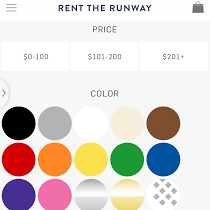As the Mobilegeddon dust clears, it’s time to refocus now, not just on being mobile-ready or mobile-friendly but on the elusive mobile conversion. How do we go about providing an experience on mobile that is a seamless part of the customer journey?
Here are 6 Mobile Conversion Strategies:
1) Start with a Mobile-Only Experience
Customers are becoming less patient with the clunky transition from desktop to mobile and expect a mobile experience that can stand on its own or be a cohesive, seamless part of their fragmented journey. If you’re not investing in a mobile-only experience customers will find a way around the poor experience which may include going to a competitor.
Companies are creating vertical-specific platforms to help create the mobile-only experience. For example, Odysys has created a travel/hospitality platform with a focus on mobile-first. Mobile bookings account for more than 50% of bookings. Digital marketing veteran Kent Schnepp founded Odysys to help hoteliers connect, manage, and track their hotel digital marketing efforts with one simple platform with a focus on mobile.
2) Employ User Testing
Focus groups and user user testing companies like UserZoom can help brands find their audience, build a pilot, survey customers and test to better understand customer needs for task completion and improve the mobile conversion process. Understanding the customer journey which includes everything from FAQ’s to execution, requires brands to consider all the elements of the mobile user experience.
3) Focus on Task Completion
Task completion on mobile can be hard, screens are small, fingers aren’t. Companies who focus on task completion help mobile users continue through the tasks and choices needed to get to conversion as easily as possible. When dress shopping, the Rent the Runway mobile experience of selecting a color is much easier than the Nordstrom mobile experience.
4) Have a Payment Integration Solution
Payment integration is still early days. Companies such as PayOne were a global option for mobile payments but couldn’t overcome the many barriers to entry. Mastercard and Visa have partnered with Apple Pay to create a formidable option and Google Wallet funds are now insured by the FDIC. PayPal and Amazon are also in the race and though it’s not entirely clear yet who will dominate in mobile payment integration, leveraging a usable payment and checkout option for mobile is a big challenge brands need to solve now to compete. Companies like Uber have created a frictionless experience for mobile payment by incorporating customer credit card storage in their app technology. Customers will want to have more than one option for checking out on mobile and brands need to give it to them. Mobile innovator Zappo’s has embraced Touch ID making logging in and encryption more secure and checkout seamless.
5) Understand the Competitive Mobile Landscape
Benchmarking your competition should be a mobile-only exercise just as marketers have leveraged competitive research for online and traditional marketing programs. AdGooRoo, SpyFu and comScore provide competitive intelligence specific to mobile and app analysis has spawned a slew of tools including App Annie. Whether analyzing mobile sites or mobile apps, leveraging tools as well as focus groups and surveys for qualitative feedback can reveal actionable insights into customer expectations for mobile in specific industries and verticals. Converting on mobile means not just understanding what customers do on your mobile site, but what their expectations are from competitive analysis for mobile.
6) Create the Mobile Conversion Dashboard
Creating the mobile dashboard should start with the basics; conversion rate, bounce rate, session duration, items per transaction, revenue per transaction, but should also include any personalized recommendation engine cross or upsell, task completion rates and content consumption as part of the funnel and how that impacts conversion. This Think with Google article shares that a path to purchase can actually be a path to purpose. The research revealed that, for the purpose driven customer, they expected brands to regularly share useful information and to engage the customers passions and interests. Mobile conversion isn’t a simple funnel. It includes many fragmented touch points, digital and otherwise, that need to be included in the mobile conversion dashboard.
Takeaways
The lofty, but achievable, mobile-first goal is striking the right balance between having a mobile-only experience that meets mobile users needs and making sure that experience is seamlessly integrated into a users other brand experiences.
Test how users engage with the mobile experience and be responsive to the user needs. Leverage tools such as UserZoom to understand and refine the mobile experience.
The mobile experience can be greatly improved if we think about task management from a users perspective. If mobile searchers are trying to choose a color, make sure they can easily see those colors on a mobile device. If they are trying to check out, make sure payment options are clear and easy to navigate.
Don’t leave out a focused dive into the competitive landscape unique to the mobile experience. A customer will set the bar at least as high as their other mobile experiences.
Create the ultimate dashboard with the help of content, search, social and paid team inputs. The dashboard is only as effective as its’ ability to capture the customer journey and illuminate opportunity.
Want to learn more? Lisa will be presenting on the Mobile Conversion panel at SMX Advanced in Seattle, Washington June 2-3 2015.









